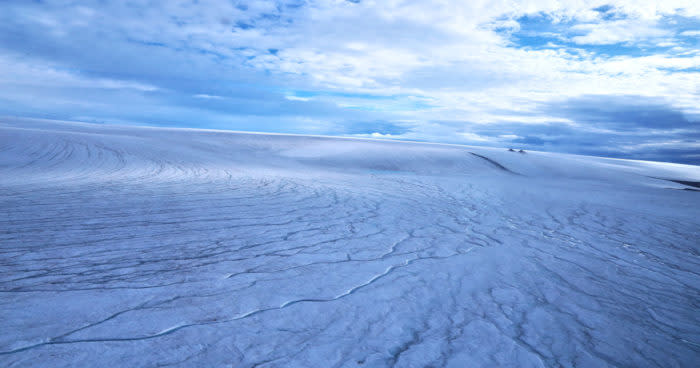Mars ‘was once covered in ice sheets’ (and it means life was more likely to thrive there)

Large areas of ancient Mars were once covered in ice sheets, and the discovery means that life is more likely to have once flourished on the Red Planet.
The melting glaciers which carved many of the features still visible on the surface today would have provided a shelter from solar radiation – and a possible harbour for life, researchers believe.
Researchers from Western and University of British Columbia analysed similarities between Martian valleys and subglacial channels on Earth, such as Devon Island in the Canadian Arctic.
The study was published in Nature Geoscience.
“Devon Island is one of the best analogues we have for Mars here on Earth,” said Gordon Osinski, a co-author on the study. “It is a cold, dry polar desert and we know the glaciation is largely cold-based.”
Read more: Life on Earth could have arrived on a comet
Osinski said: “Our study challenges the widely held view that most valley networks on Mars were formed by rivers fed by precipitation.
“While we found evidence consistent with a small handful of valley networks having formed in this way, our observations suggest that the majority formed beneath ice sheets.”
The researchers analysed more than 10,000 Martian valleys using a new algorithm to work out their underlying erosion processes.
The researchers compared data from areas on Earth with data from Mars missions.
Rather than ancient Mars being “wet and warm” as scientists previously believed, the researchers now think that many of the planet’s valleys were carved by melting ice.
Read More: Starlink, everything you need to know about the satellite network
“For the last 40 years, since Mars’s valleys were first discovered, the assumption was that rivers once flowed on Mars, eroding and forming all of these valleys,” said Grau Galofre.
“But there are hundreds of valleys on Mars and they look very different from each other. If you look at Earth from a satellite you see a lot of valleys: some of them made by rivers, some made by glaciers, some made by other processes, and each type has a distinctive shape.
“Mars is similar, in that valleys look very different from each other, suggesting that many processes were at play to carve them.”

Grau Galofre’s theory also helps explain how the valleys would have formed 3.8 billion years ago on a planet that is farther away from the sun than Earth is, during a time when the sun was less intense.
“Climate modelling predicts that Mars’ ancient climate was much cooler during the time of valley network formation,” said Grau Galofre, currently a School of Earth and Space Exploration postdoctoral fellow at Arizona State University.
The researchers believe that the finding makes it more likely that life once flourished on Mars.
A sheet of ice would lend more protection and stability of underlying water, as well as providing shelter from solar radiation in the absence of a magnetic field – something Mars once had, but which disappeared billions of years ago.



